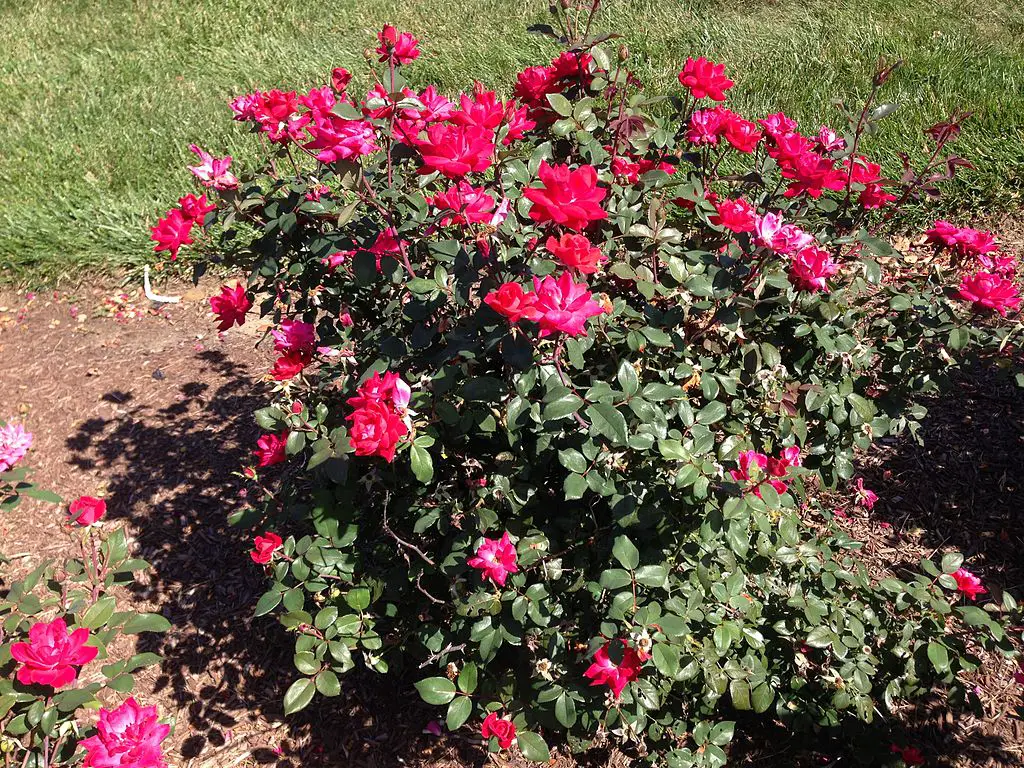Although roses enjoy compost, you can easily overfeed them and interfere with the flowering stage. Without the flowers, your rose garden would be a waste of time and resources. For this reason, composting should only be done monthly using ordinary compost.
Table of Contents
Can you use Normal Compost for Roses?
Ordinary compost is an excellent rose food, especially for plants already established in the soil. Compost, as we all know, is high in magnesium, potassium, calcium, phosphorus, and other nutrients that help plants grow.
When transplanting new roses from a nursery or purchasing bare-root plants, use potting soil rather than compost. Your plant will have access to all the nutrients it requires in one location. It would help if you continued to feed the plants as they grow with any high-quality rose compost.
The best rose compost contains a healthy mix of materials like wood chips, leaves, grass clippings, and other natural products. Bagged compost is also available at local garden centers or online. Making your own compost is more advantageous because you can tailor it to your roses’ needs.
You can add nutrients like bone meal or blood meal, often missing from store-bought compost.
Also, add some earthworms to your compost to improve the drainage and aeration of the soil. You can also supplement your homemade compost with peat moss or composted bark.
When Should you Put Compost on Roses?
Healthy rose plants require regular feeding throughout the growing season. Begin the process during the planting season to encourage new growth.
When constructing a new bed, fill a plant hole 12-18 inches deep with at least three to four inches of compost.
The best way to do it is to add recommended compost for roses in each planting hole. Then, about a month later, or as soon as your plant’s root system has established itself well in the soil, apply an organic liquid fertilizer.
Alternatively, add 1/2 cup of bone meal in early summer or mid-spring as the season’s first rose food.
Spread some mulch or well-rotten manure around the roots later in the spring to help feed your plant.
Remember that fresh manure can be too acidic and likely to burn the root system. As a result, it should be at least two years old and from a trustworthy source.
To feed your roses with compost tea, combine one cup of compost or well-rotted manure with one gallon of water. Allow it to sit for a week before using the solution.
Do Roses Need Ericaceous Compost?
You only need ericaceous compost for roses if the pH level of your garden soil is more alkaline than the required levels.
Use ericaceous compost to reduce the pH level if it’s too high. For soil within the normal range, ericaceous compost may make it too acidic for your roses to thrive.
Still, you can also use ericaceous compost when transplanting your roses. This will help them adjust to their new surroundings and keep them from becoming stressed due to the move.
Ericaceous compost costs more than other types of compost. Therefore, it is not the best option for inexperienced home gardeners.
Regular compost may be more cost-effective if you only have a few roses or want to create a small bed.
Is Mushroom Compost Good For Roses?
Any organic material, including mushroom compost, is ideal for all types of roses.
Some gardeners prefer to use mushroom compost at the bottom of planting holes rather than as mulch.
Mushroom compost is high in nutrients and organic matter, making it an excellent soil amendment. It also contains beneficial microbes that aid in the breakdown of organic material into plant-friendly forms.
How to make your mushroom compost
Making mushroom compost at home is simple. You can use any mushroom, but oyster mushrooms are the best choice due to their high carbon content.
Follow these steps to make your own mushroom compost:
- Purchase a reusable wooden or metal bin. Plastic buckets have the potential to leach into your compost.
- Combine three parts water and 1 part dry compost. Use sawdust or wood chips (dry compost) to structure your compost. You also don’t have to keep adding it throughout the process.
- Stir the fresh mushrooms with your hands to incorporate as much air as possible. A small amount of sandy soil may aid in drainage.
- To mature, keep your compost pile in a dry place or shade. Continue to turn it with a shovel and add more water as needed.
- Keep it well ventilated to allow air to circulate and to reduce odors. However, ensure that the ventilation holes are not large enough to allow rats and mice to enter.
- Your compost pasteurizes fully in about four weeks. Allow it to cool to 90 degrees before applying it to your plants. A well-made mushroom compost should be dark brownish in color, crumbly, and smell earthy.
What is the Best Soil Mix for Roses?
Loam soil takes the lead thanks to its abundant nutrients and air content. Overall, loam contains about 46% inorganic elements like silt, sand, and clay. It also has at least 4-6% organic material, making it an excellent choice for a rose garden.
Roses are very adaptable and can grow in almost any type of soil. Still, the best rose soil should be well-drained and rich in organic matter.
The water retention factor of clay soils makes them unsuitable for roses. Sandy soil may be too dry, acidic, or lacking nutrients for rose plants.

